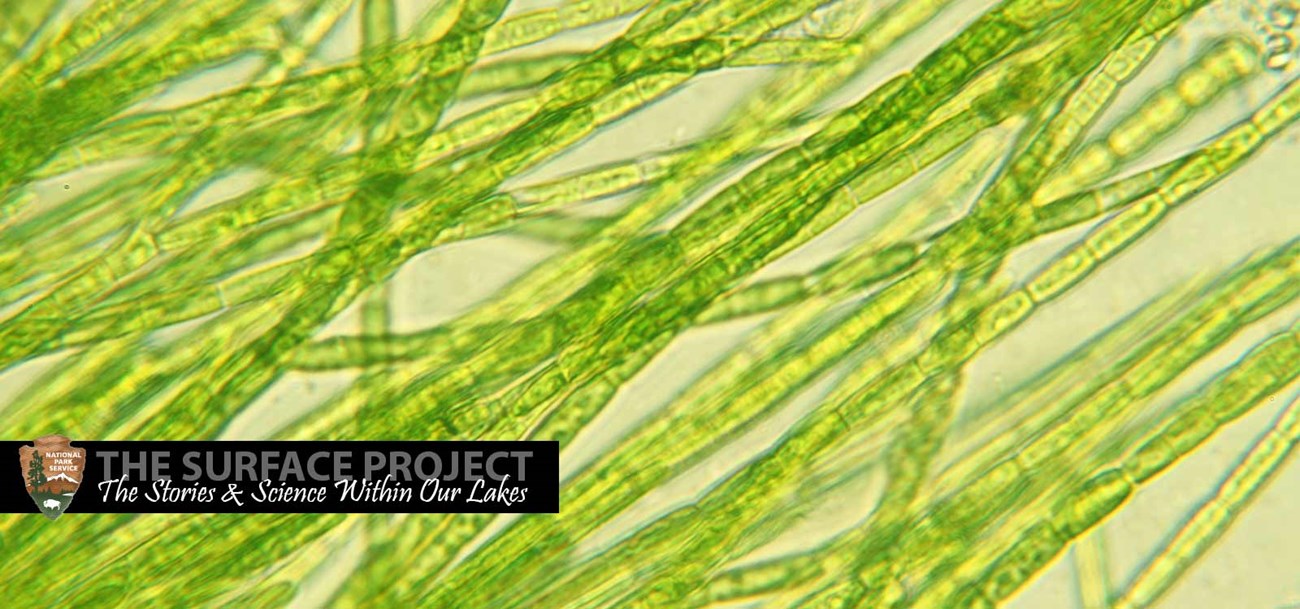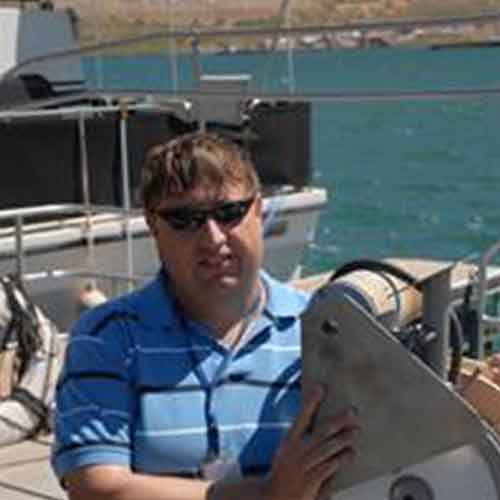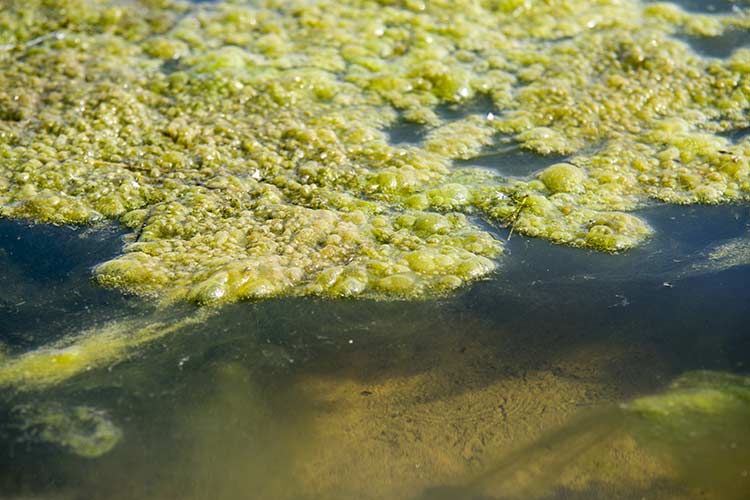
Algae – The Foundation of Lake LifeDespite being located in a desert, Lake Mead and Lake Mohave are full of life – from striped bass to freshwater sponges and even dive-bombing peregrine falcons. But all this complex life is only possible because of much less charismatic organisms. In fact, the entire ecosystem relies on inhabitants that are often so small that they can barely be seen with the naked eye. Without algae, these lakes would be very different. Algae have been on earth for billions of years. They can be as simple as a single cell floating in the water or as complex as an underwater kelp forest measuring over 100 feet tall. There are many different species of algae, each with a special set of conditions they prefer. Algae can exist in the smallest puddles, the largest lakes, our oceans, and a select few can even thrive in the snow on a mountaintop. 
Oxygen produced by algae is used by the smallest snail to the largest fish. Algae play an important role in the lakes’ ecosystems by using the sun’s energy to photosynthesize and produce oxygen1. This oxygen is used by many other organisms in the lakes, from the smallest snail to the largest fish. Algae, along with aquatic plants, are also a food source for many animals in the lakes including zooplankton and small fish. They, in turn, are food for larger predators such as striped bass. These fish then become food for even larger fish, birds or even us. Without algae as a major food source and a provider of oxygen, many other lake inhabitants would not survive. A healthy lake has a variety of organisms that work together to create a balanced ecosystem, including multiple alga species. Could you imagine Lake Mead or Lake Mohave without any fish? 
Algae is the foundation of any lake's food web. At lakes Mead and Mohave we often don’t see algae while swimming or boating, but they’re always there. Typically, in shallow waters or in a small cove, you might see a hint of green floating in the water or clinging to rocks. Warmer temperatures and higher nutrient levels allow the algae to grow to a high density. Sometimes, when conditions are just right, algae can produce an algal bloom, meaning their population increases to very high levels. Balance is the key - just the right amount of algae produces food and oxygen for a healthy ecosystem but too many can cause populations to explode – detracting from the recreation experience, altering food webs, and potentially adding toxins to the system. Todd Tietjen, Ph.D. For scientist Todd Tietjen, Ph.D. of the Southern Nevada Water Authority, a love of science took him all the way across the country to Las Vegas. Todd grew up just outside of New York City and he’s been moving west ever since. His early passions were both environmental science as well as theater, but Todd now focuses his career on science. Read MoreWhen are algae too much of a good thing?
Algae blooms can occur anywhere on the lake if conditions are right. Doctors evaluate human health by asking questions about how we are feeling, using stethoscopes, taking x-rays, and by using other tools and tests. In the same way, scientists determine the health of natural systems by observing both the health of the organisms that inhabit them and the well-being of the system as a whole. In addition to examining the fish, snails, and other species living in the water, a lake’s physical condition is evaluated by measuring characteristics like temperature, dissolved oxygen level, nutrients (such as phosphorus and nitrogen), and water pH. |
Last updated: April 4, 2017
